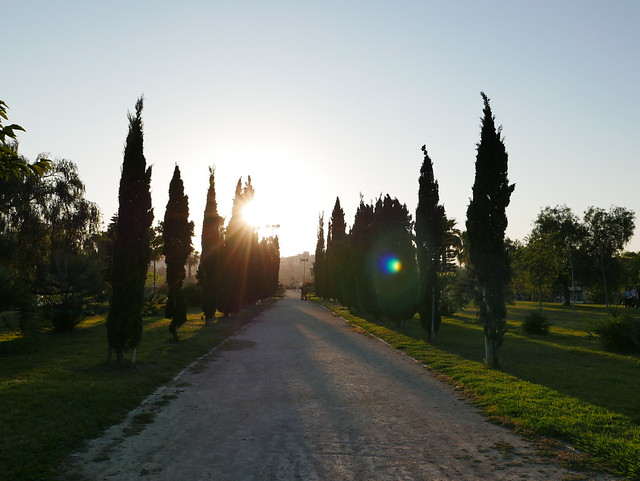The Jardínes del Túria, Valencia, Spain
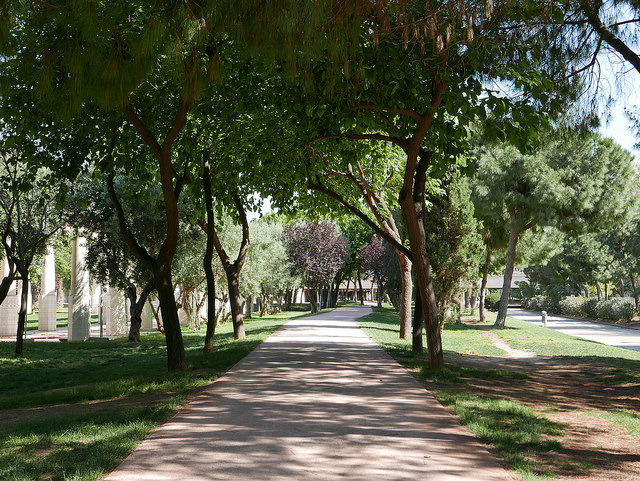
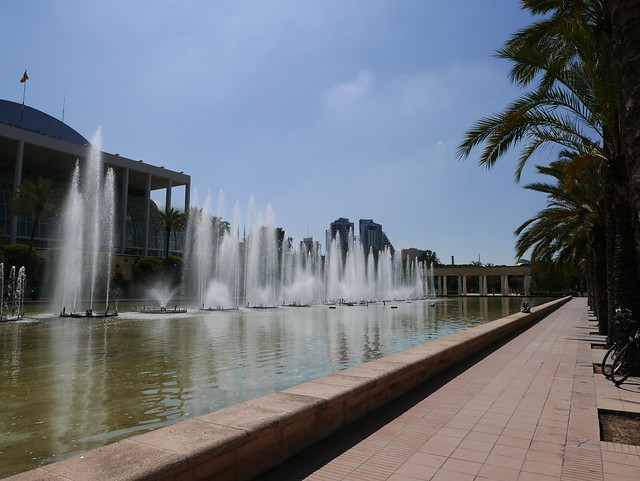
The Palau de Música, in Valencia.
I walked a lot in Spain. Ten or twelve miles on most days, sometimes more, most of it spent walking seemingly with purpose, and yet more often than not there was no specific destination where I was headed. When I ended up at a churro stand at the end of the day, it was COINCIDENCE. (“I hadn’t spent the entire day looking for it,” she swore again and again. It was a claim she would take to her deathbed which was, fittingly enough, littered with churros.)
Most days, I wandered through the Jardínes del Túria – the Túria Gardens.
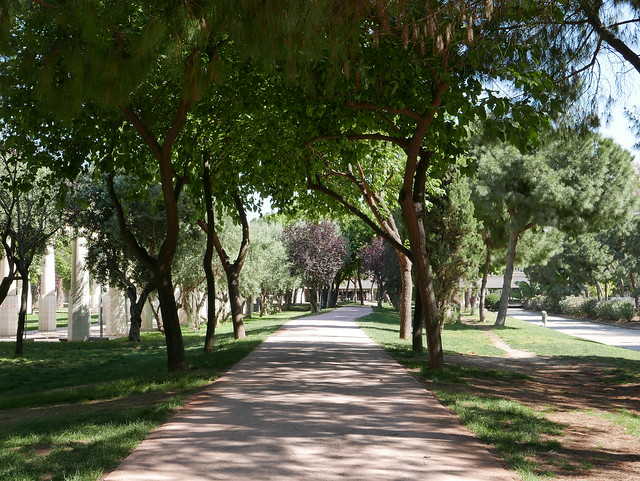
The Turia River once ran through the Valencia, but would often overflow and cause destruction in nearby areas (spoiler: the earth is trying to kill us because, well, wouldn’t you?). After a devastating flood in 1957, the river was diverted to the south of the city, in a sort of bravado demonstration of man’s dominion over nature which I’m sure will come back to bite us all in the ass at some point. This left a dry river bed that cut across Valencia and bordered its historical center. It remained a sort of depressed and dusty area – barren and undeveloped, a friend told us that when she’d studied there in the early 2000s, she wouldn’t dream of walking through it, especially not at night. But in recent decades city planners and architects have transformed it into sprawling public gardens – the Jardínes del Túria.
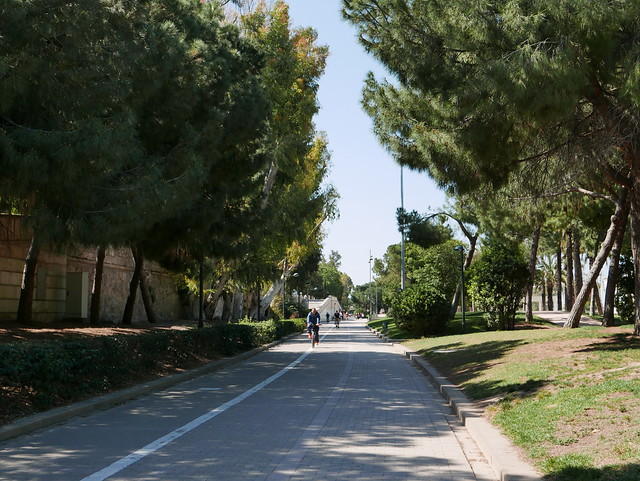
They form a brilliant green swath in the middle of the city – full of bike paths and fountains and the occasional giant massive playground shaped like Gulliver. I kid you not:
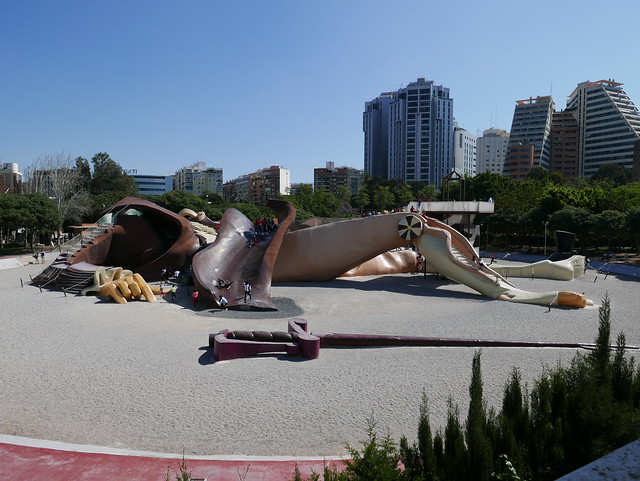
It’s hard to appreciate it when you’re too close to it, and it wasn’t until I saw the overhead image from Google Maps that I finally truly saw it. It’s designed to look like a giant man splayed out on the ground, and the effect of children sprawling all over it makes it seem like he’s been taken down by a group of Lilliputians.
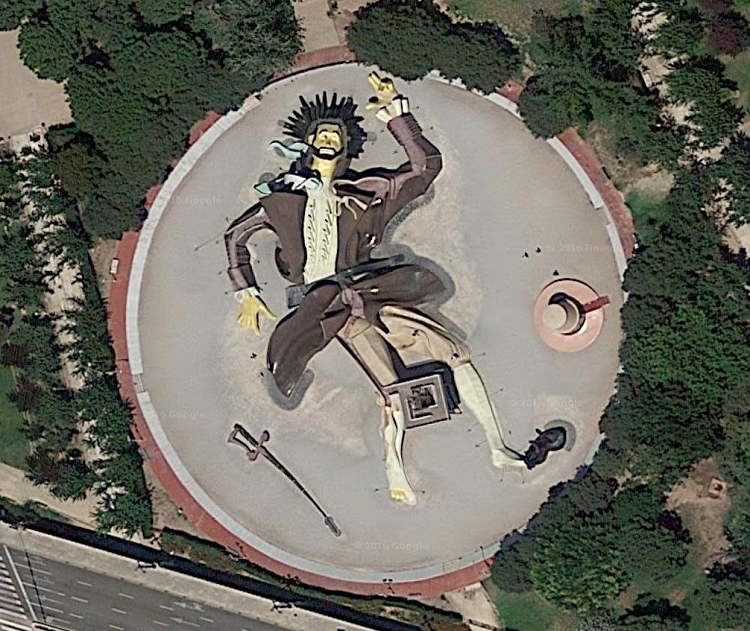
Photo courtesy of Google Sauron. I mean maps. Google Maps.
Parque Gulliver is simply one small part of the gardens, which go on and on for miles. The vast majority of the city’s museums can be found here, and it is also home to the Palau de la Música, Valencia’s concert hall and the home of their orchestra, which overlooks a bank of fountains that sit in the now defunct river bed.
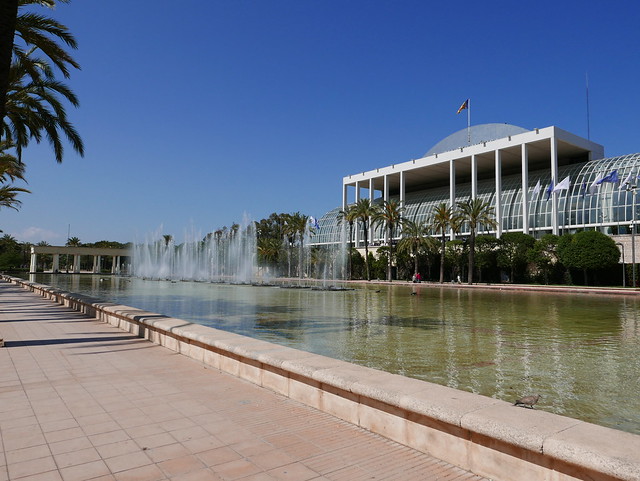
Ancient bridges still cross over it, 18 in total, connecting the sides of the city that were once separated by the Turia river.
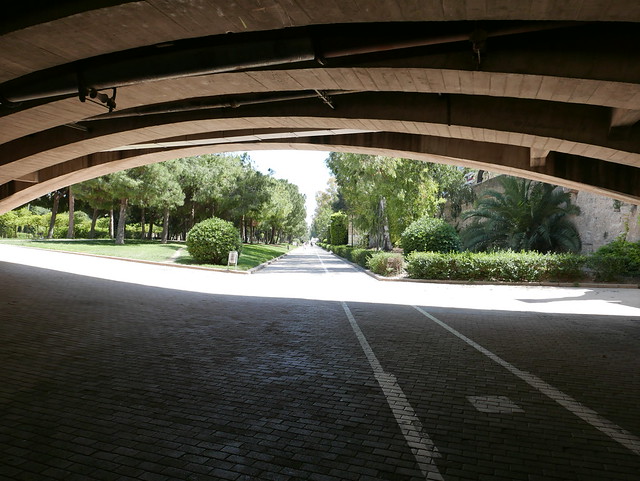
There are bike paths and walking paths that stretch for miles.
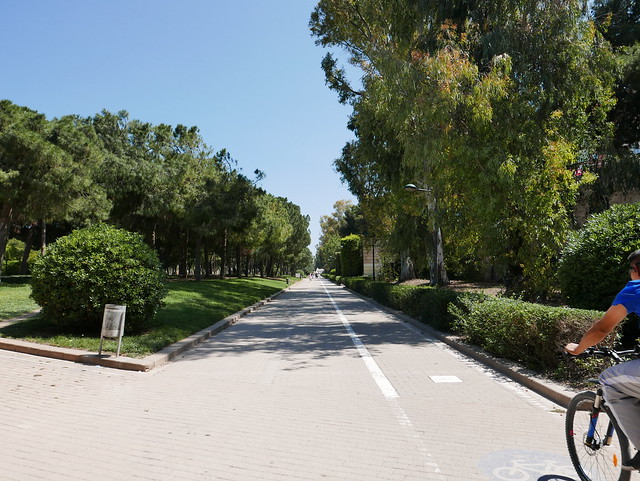
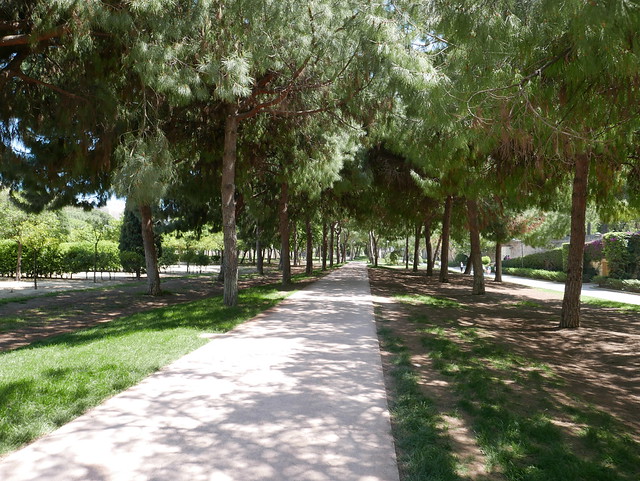
If you follow them far enough, you will eventually reach the City of Arts and Sciences (“La Ciudad de Las Artes y Ciencias“) – a rather remarkable collection of buildings which are home to a science museum, an opera house, and the largest aquarium in Europe.
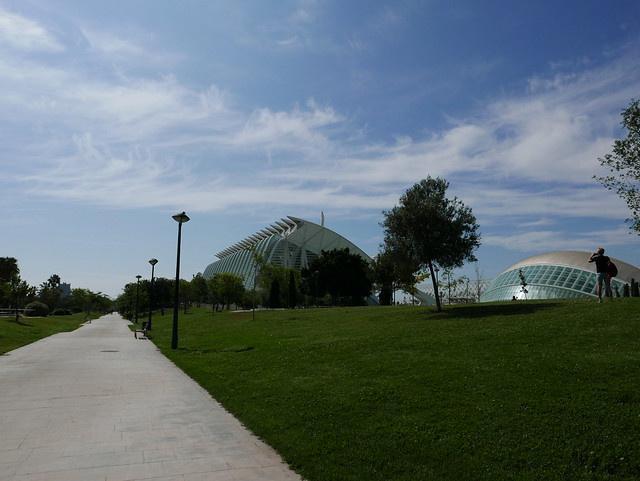
They look like space ships fallen to Earth.
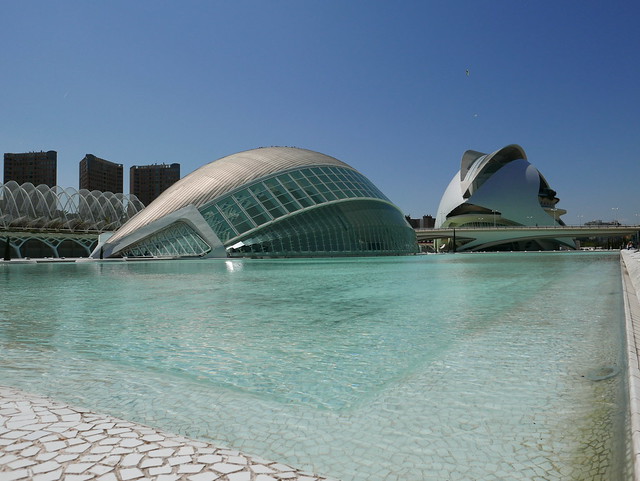
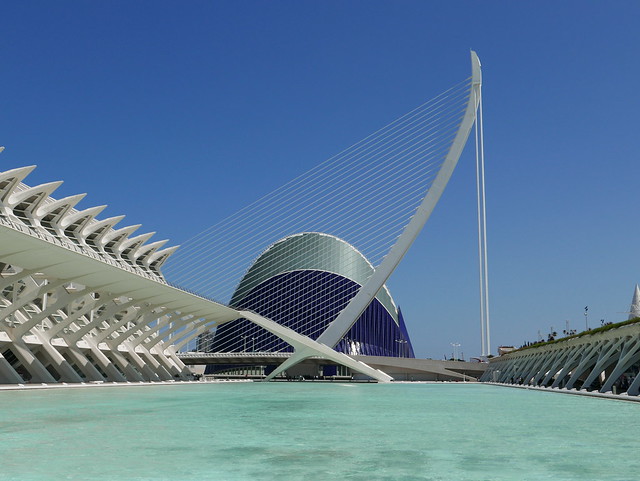
When people ask me what to do in Valencia, I’m flooded with ideas. Go during Las Fallas, visit the Museo Fallero, stop by the ceramics museum (and lose your mind temporarily, as I apparently did). These will not disappoint. But if the weather is beautiful (as it almost always is in Valencia), I recommend you walk through the Jardínes above all else. Marvel at the architecture and breathe air that smells like citrus and try to wrap your head around the fact that you now stand where water once flowed. And when you have done all of that, go get a churro. Because you have walked for miles and miles, and the beauty of the city cannot be your only sustenance.
